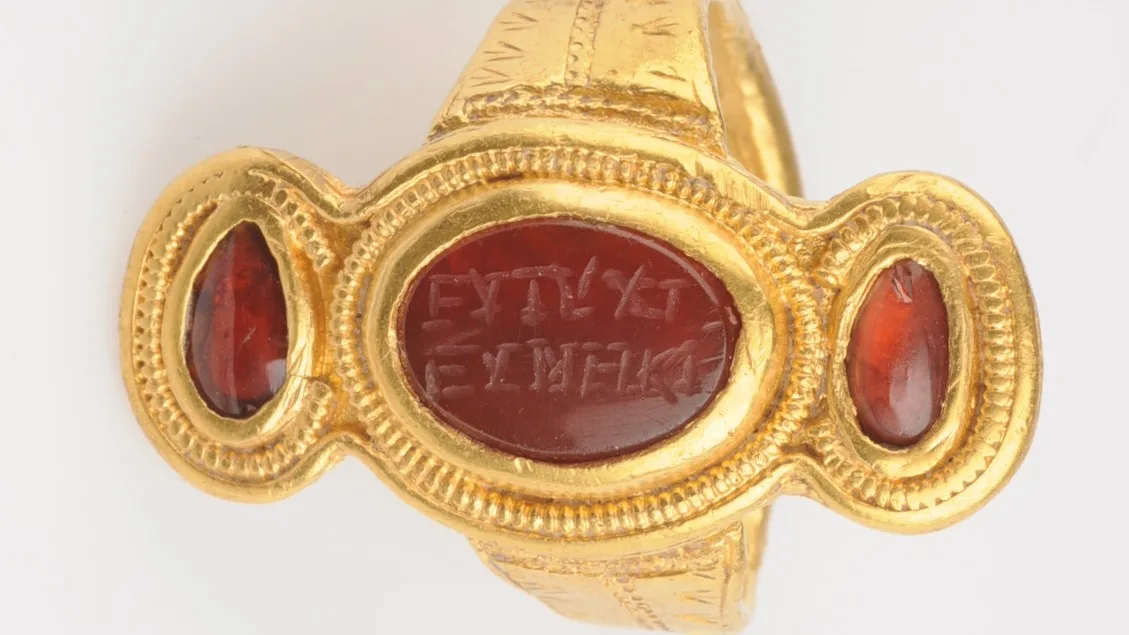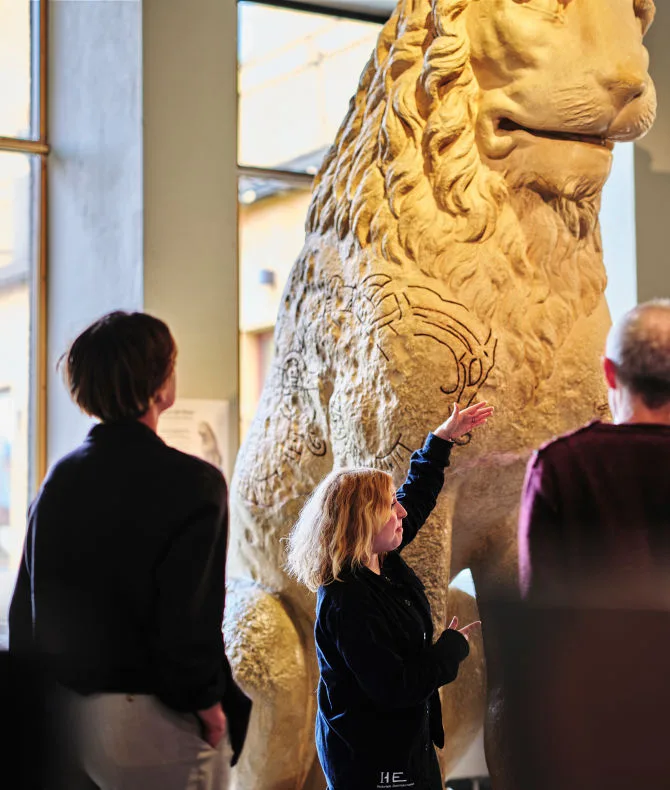Runes
Runic writing was not made on paper, but carved into materials such as wood, stone, and horn, and on personal belongings such as combs and weapons. Many messages were surely carved on tablets and sticks of wood. The Swedish word bokstav (“letter”) originally means “a rune carved on a beechwood tablet.” In other words, the very word for “letters” refers to runes!
The runic alphabet is called futhark, after the first six characters of the sequence. The common Viking-Age runic alphabet had 16 characters, developed from earlier alphabets with more signs.
Runes began to be used in the first centuries after the birth of Christ. They formed a written language that changed over time. Texts written in runes can be difficult to read. Even if we can decipher the symbols, we may not understand the language, as it has changed over the course of a thousand years.
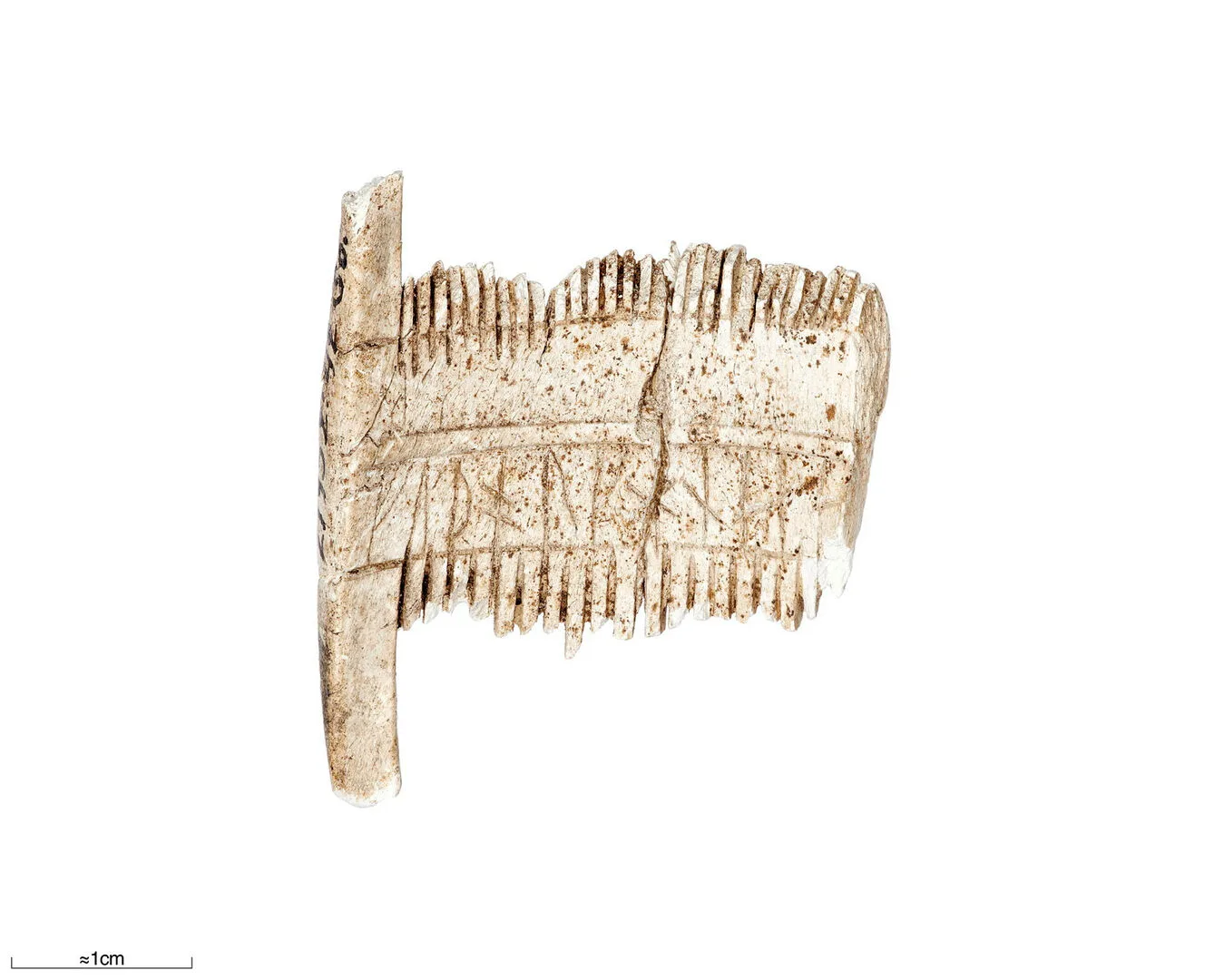
Comb
The comb has three inscriptions of the futhark, one inscribed backwards. This was probably made as a protective charm to ward off evil spirits.
Viking Age advertising
Runestones are monuments that were often erected in highly visible places in the Viking Age landscape. Like a kind of advertising, they spread their images and messages to those who passed by. The texts are often memorial inscriptions for deceased persons, written by their relatives. For example, they might say:
Ragnvaldr had the runes carved in memory of Fastvé, his mother, Ónæmr's (Onämn´s) daughter, (who) died in Eið.
Þorsteinn (Thorsten) had the landmark made in memory of Sveinn, his father, and in memory of Þórir (Tore), his brother. They were abroad in Greece.
Not just anyone could afford to hire a runemaster to create a memorial. Most runestones are linked to the Viking Age aristocracy or to wealthy farmers. In the Viking Age there were specialist runemasters who probably made their living travelling around carving stones. The most famous is Öpir, who carved more than 50 stones in Uppland, Gästrikland, and Södermanland.

Rune stone
The stone was found in 1911 when digging for new graves on Resmo churchyard. The inscription is damaged. The visible part read "...the stones for Svena, her husband..." The use of the plural form indicates that there used to be more than one stone. (The painting is modern, but in accordance with traces found on other stones.)
Poetic sources
Runic inscriptions are a historical source that provide a wealth of information on many subjects. The stones mention numerous personal names and recount historical events, such as the Ingvar Expedition, a great Viking voyage eastwards that ended disastrously. Sometimes the inscriptions are poetic, such as the one on a stone at Gripsholm:
Tóla had this stone raised in memory of her son Haraldr, Ingvar's brother. They travelled valiantly far for gold, and in the east gave (food) to the eagle. (They) died in the south in Serkland
“To feed the eagle” means to kill, and Serkland was the Scandinavian Viking-Age name for “the land of the Saracens,” roughly corresponding to the lands of the Abbasid Caliphate in western Asia and the Middle East.
Runes as graffiti
Viking Age graffiti can be found in a few places around the Mediterranean. In the Hagia Sophia mosque in Istanbul there are several inscriptions. A large stone lion that once stood in the harbour of Piraeus in Athens, but is now in Venice, formerly bore a large runic inscription. In the entrance hall of the Swedish History Museum there is a plaster cast of the lion with runic tattoos.
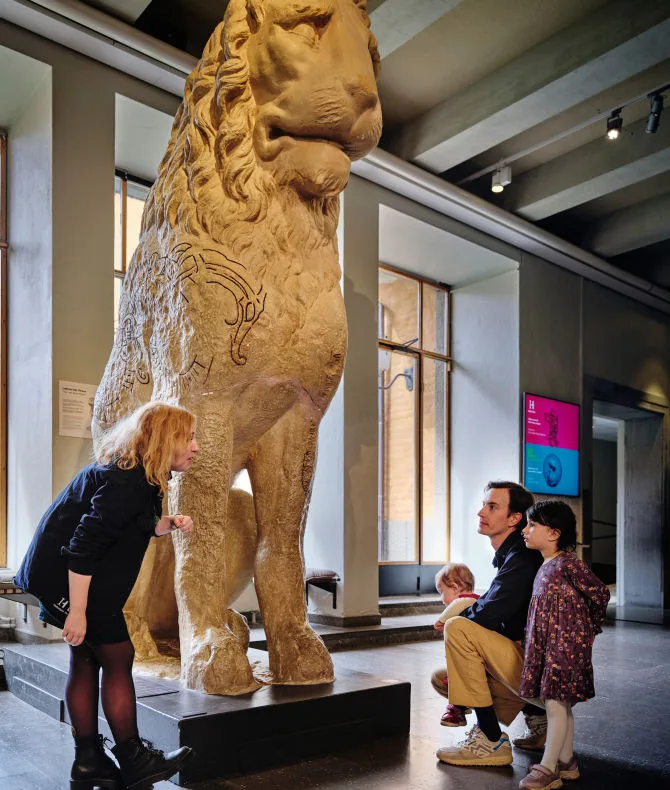
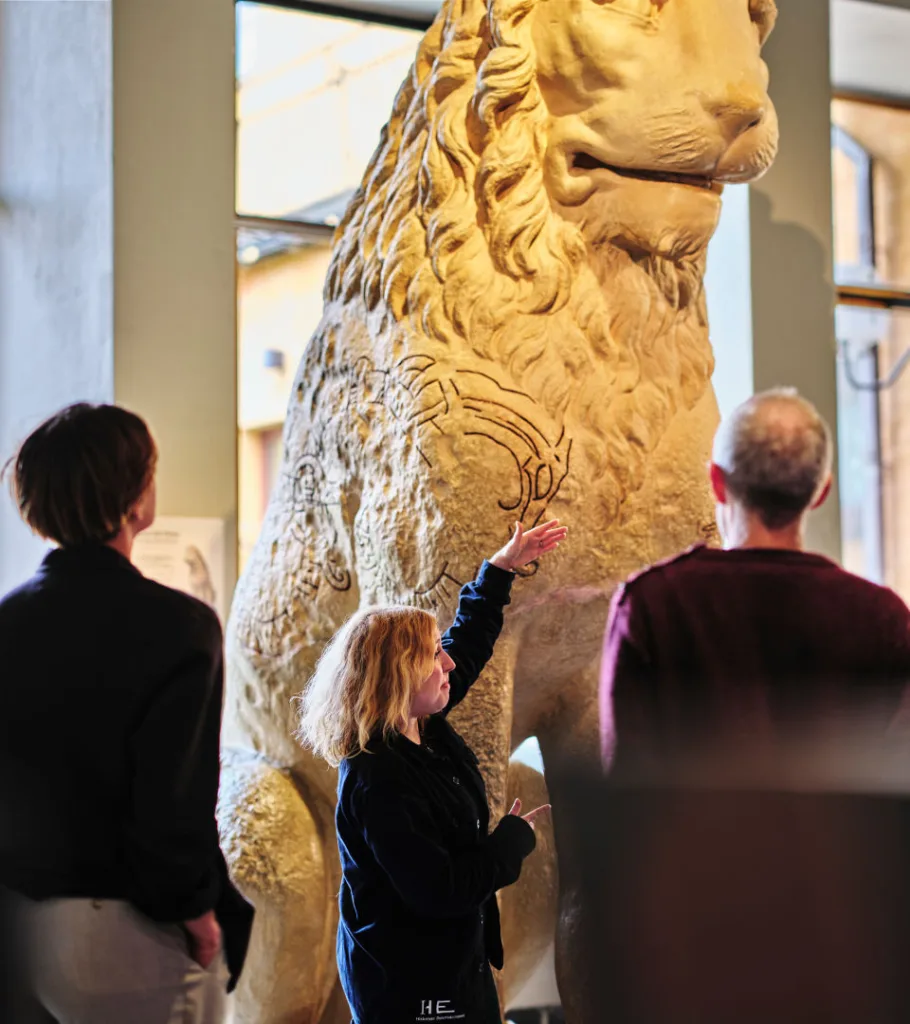
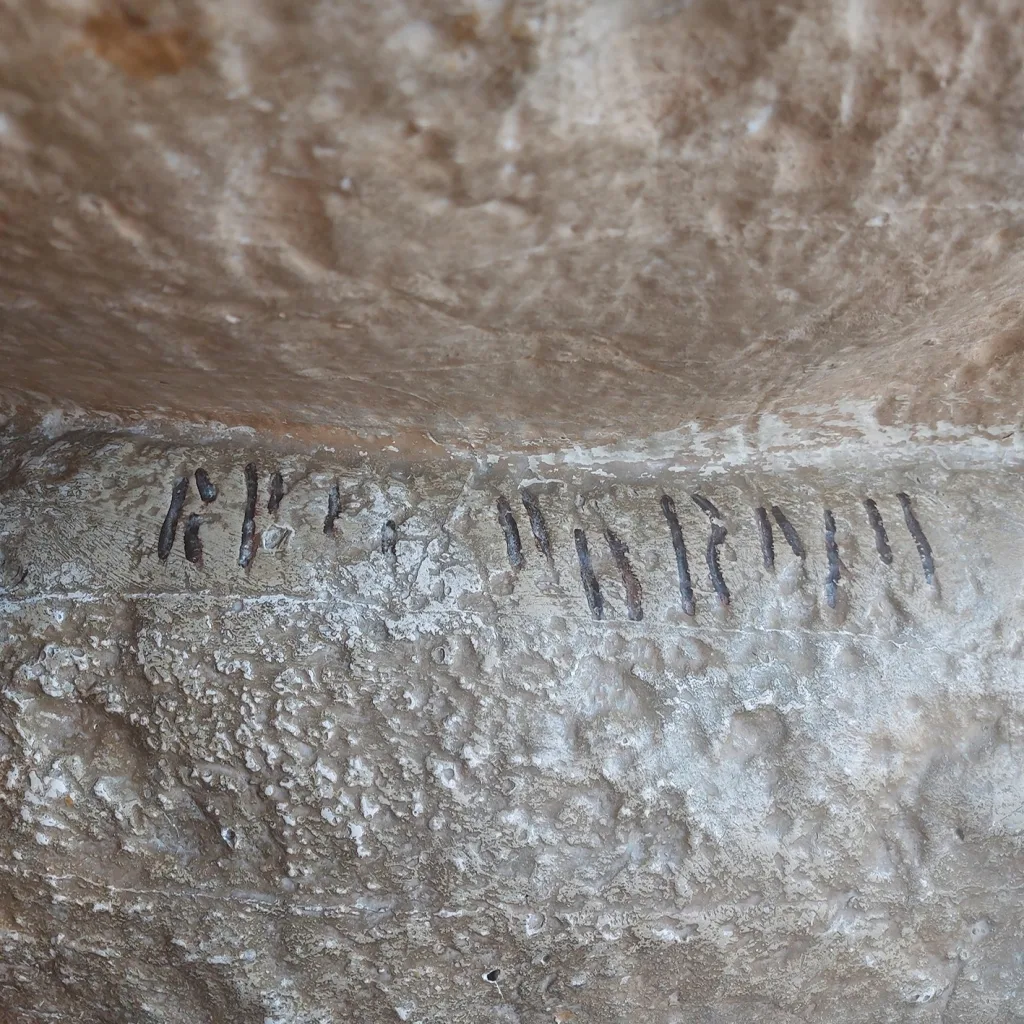
Photos: Ola Myrin and Jenny Nyberg, The Swedish History Museum/SHM.

